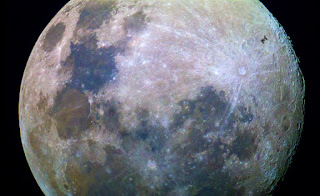At the end of last week, a gorgeous picture of the International Space
Station passing in front of the moon was taken by Dylan O’Donnell from
Australia. This picture is quite the catch, since the Space Station took about
a third of a second to pass by our planet’s only natural satellite.
We often get to see how small the ISS is when astronauts take pictures
of its crowded halls while in orbit, but there’s nothing like a little
perspective to bring it all together. It can be hard to reconcile that small,
glowing disc in the sky at night with the pictures of the lunar landing, but
the moon is actually quite large! Also, who knew the ISS looked like an
Imperial Tie-Fighter. Very suspicious.
Science fiction loves the idea of faster-than-light travel, even though
the very idea of it is completely impractical (gravity, my friends, is a
dangerous thing!). While we’re getting closer and closer every day to
high-speed space travel thanks to the research on the ion-drive, it is highly
unlikely that this final speed barrier will ever be surpassed.
In the meantime, however, the speed of light provides us with plenty of
scientifically accurate and extremely cool topics for fiction as it is.
Consider this article on the recently discovered supernova that has broken all
the records for being the brightest explosion observed by man. This detonating
star shone with the light of about 600 BILLION suns. We can’t even imagine how
bright that really is. Thank goodness the flare was a safe distance away from
our solar system. We got to see the show without experiencing the catastrophic effects at a nice, quiet, 2.8 billion light
year distance.
A light-year, as we all know, is the time it takes for light to travel
in one year (that’s a really long way). When we observe the light of the stars,
we are seeing light that is already thousands, maybe millions of years old. And
in this case, we are seeing light that is already 2.8 BILLION years old. Have
you ever wanted to experience some kind of radical time travel? This is
probably as close as you’ll ever get. We observe, in real-time,
an event that took place almost 3 BILLION years ago!
Have you ever seen a picture of the famous Pillars of Creation? Go look
them up now. They’re one of the most gorgeous structures in the universe that
Hubble has been able to capture. The truly sad thing is that these
mind-boggling towers of gas and dust and star-birth don’t actually exist. Not
anymore. The pictures that Hubble gathered are based on light that was emitted
so long ago that the clouds have by now very likely dispersed.
Have you ever wanted to visit space? This might be a reality within a
few decades, since NASA just selected the crew of the first ever Commercial
Space Flights scheduled to begin in 2017. As the United States continues to
push for putting feet on Mars, the number of exciting advances in space
research continue to pile up. A new spacecraft, the Orion, a new launch system, the recently tested SLS rocket,
alongside a concrete goal of reaching Mars by 2030. Now these new astronauts are
preparing to get us closer to large-scale space travel than we ever have
before.
I, for one, have always wanted to
make the trip. I’m hoping that it will be possible in my lifetime.
And the week wouldn’t be complete without briefly mentioning that the
New Horizons Probe has begun its collection of data at the end of the Solar System
with its closest approach of Pluto on July 14, making this the first time in history
that the outer planet has been reached by mankind for research. Total data
collection and interpretation will take a year. Meanwhile, New Horizons will
continue on out of the Solar System and beyond.
Space…the final frontier.

No comments:
Post a Comment